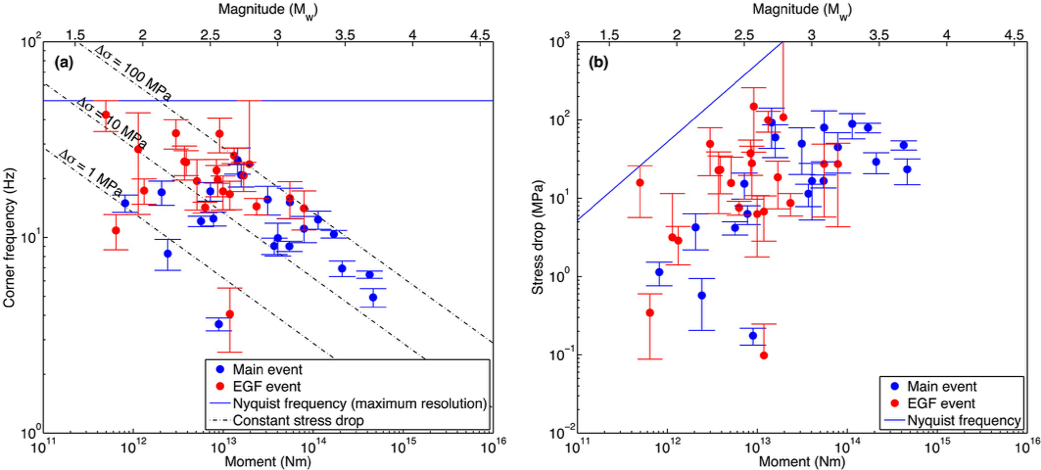Convection rolls in subglacial groundwater imply elevated geothermal heat flow at the base of the Antarctic Ice Sheet. The geothermal heat flux (GHF) imparted to the base of the Antarctic Ice Sheet (AIS) governs ice flow. We raise the possibility that if subglacial groundwater is abundant in sedimentary basins found beneath the AIS, this water can undergo hydrothermal convection. We model the formation of these convection rolls — our findings imply that in many locations, the heat flow felt by the base of the ice sheet is elevated relative to that inferred geophysically.
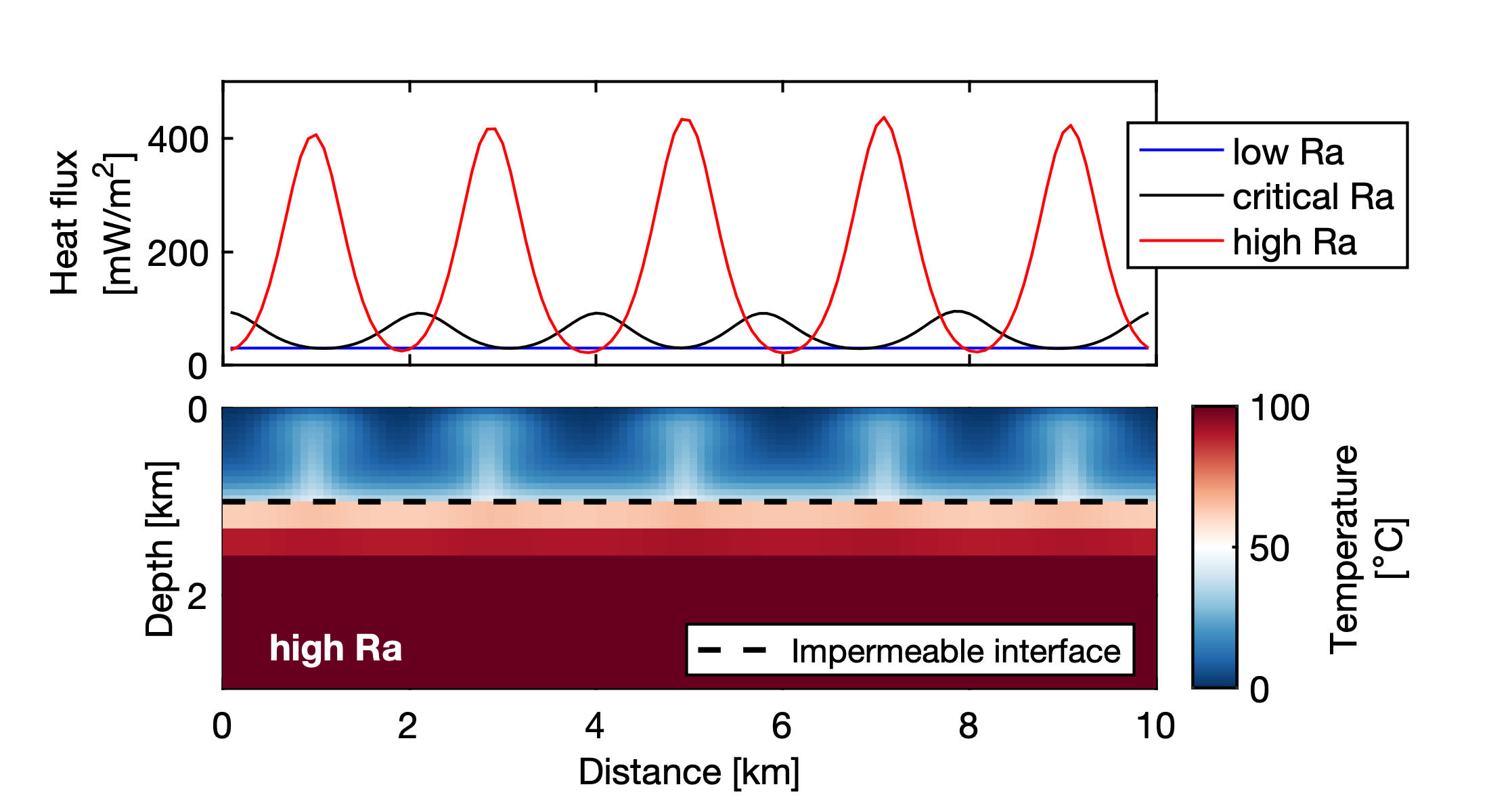
Research
Folds and fractures at the McDonald Ice Rumples constrain ice rheology and criterion for failure. We model deformation at the McDonald Ice Rumples (MIR), formed as the Brunt Ice Shelf is grounded into a bathymetric high. The MIR are characterized by concentric folds intersected by radial fractures, implying viscous and brittle behavior, respectively. We interpret these features to constrain ice rheology and strength.
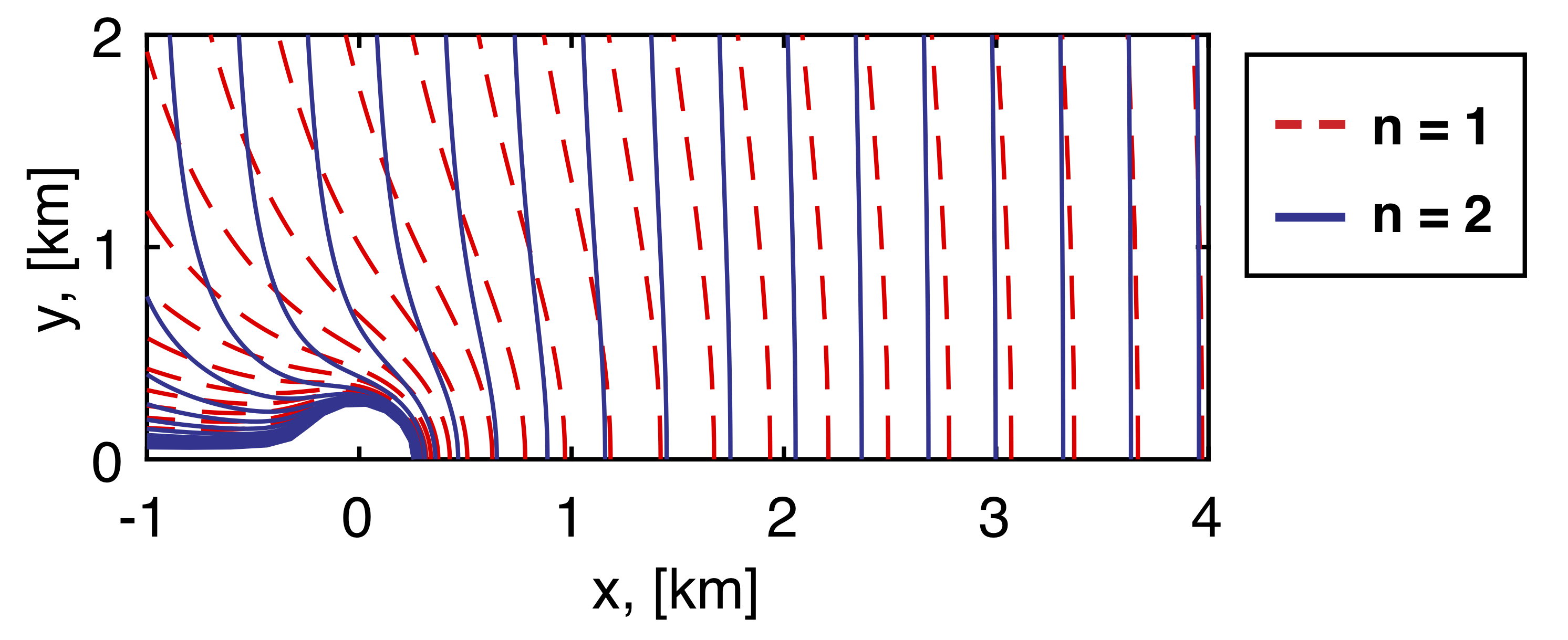
Deglaciation-enhanced mantle CO2 fluxes at Yellowstone imply positive climate feedback. We model how the deglaciation of the Yellowstone ice cap caused a reduction in mantle pressures and enhanced melting 19-fold. We predict the additional melting segregates a globally-significant mass of CO2, potentially playing a role in positive feedbacks between deglaciation and climate. We suggest enhanced melting may be important in other magmatically-active, continental settings undergoing rapid deglaciation — for instance, under the collapse of the West Antarctic Ice Sheet (WAIS). Publication
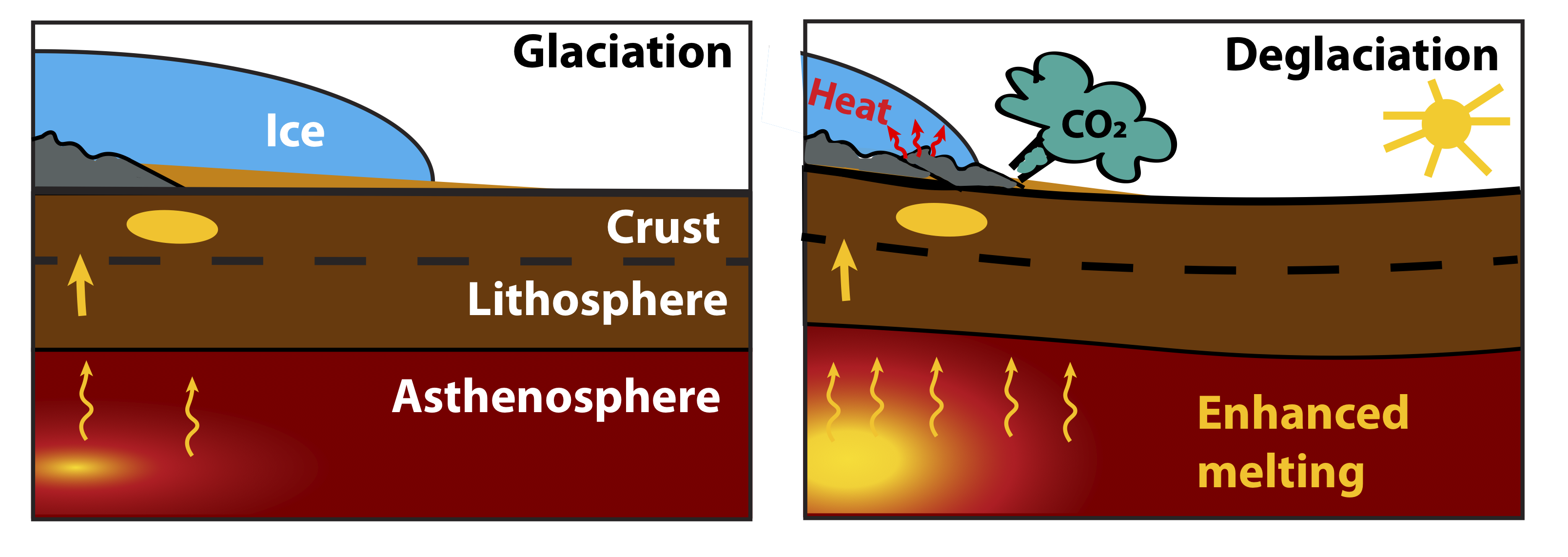
Marine Ice Cliff Instability mitigated by slow removal of ice shelves. The Marine Ice Cliff Instability posits ice cliffs above a critical height collapse under their own weight, initiating runaway ice sheet retreat. We model the formation of marine ice cliffs, as an Antarctic ice shelf is removed. We show that over ice-shelf collapse timescales longer than a few days (consistent with observations), ice cliffs comprised of intact ice are more stable, undergoing viscous flow rather than brittle fracture. Publication
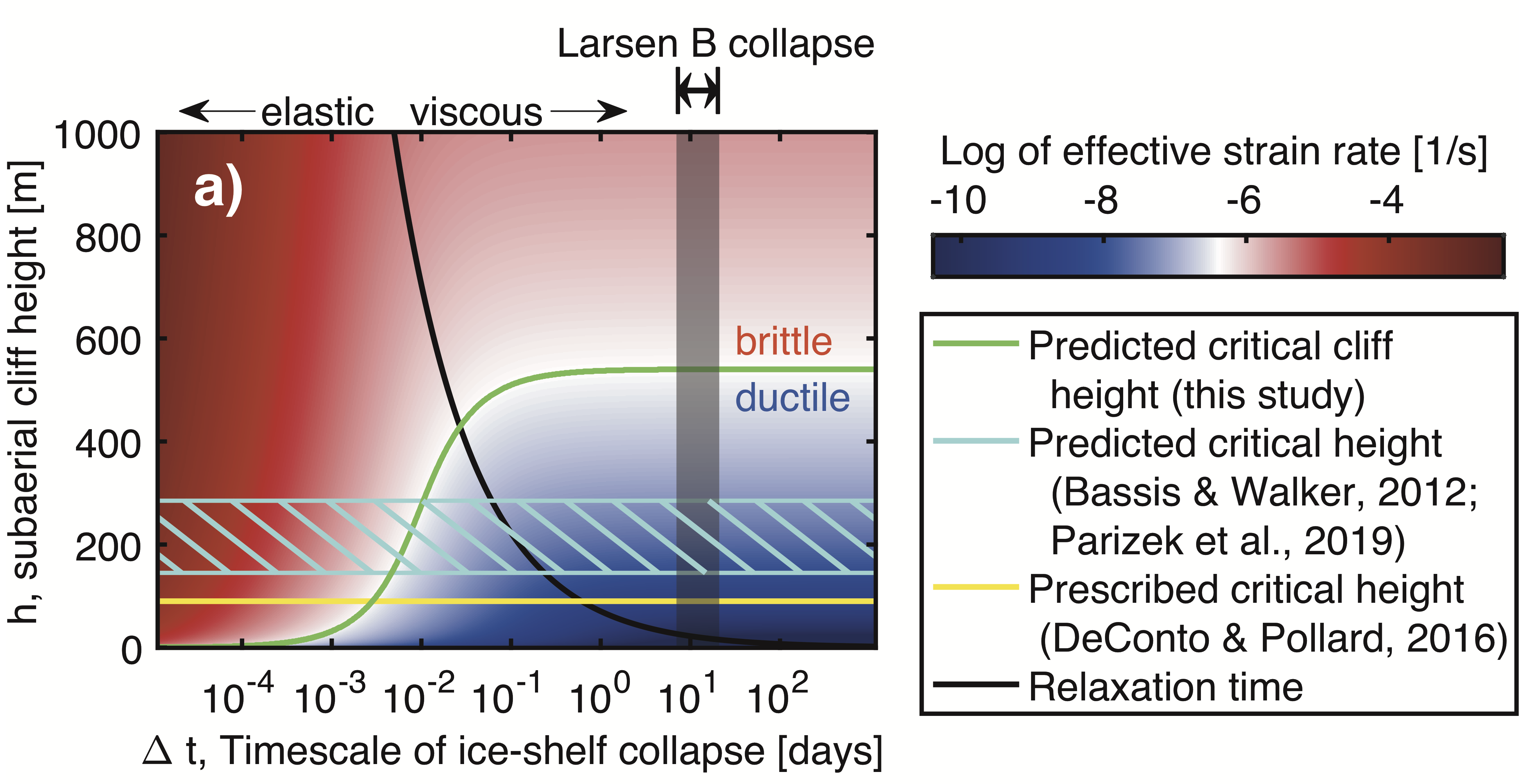
Predicting rates and distribution of carbonate melting in oceanic upper mantle: Implications for seismic structure and global carbon cycling. We predict how small concentrations of CO2 found in passively upwelling mantle throughout ocean basins may generate low-degree carbonate melting. We find the flux of CO2 segregated by these melts rivals the flux from mid-ocean ridges. Publication
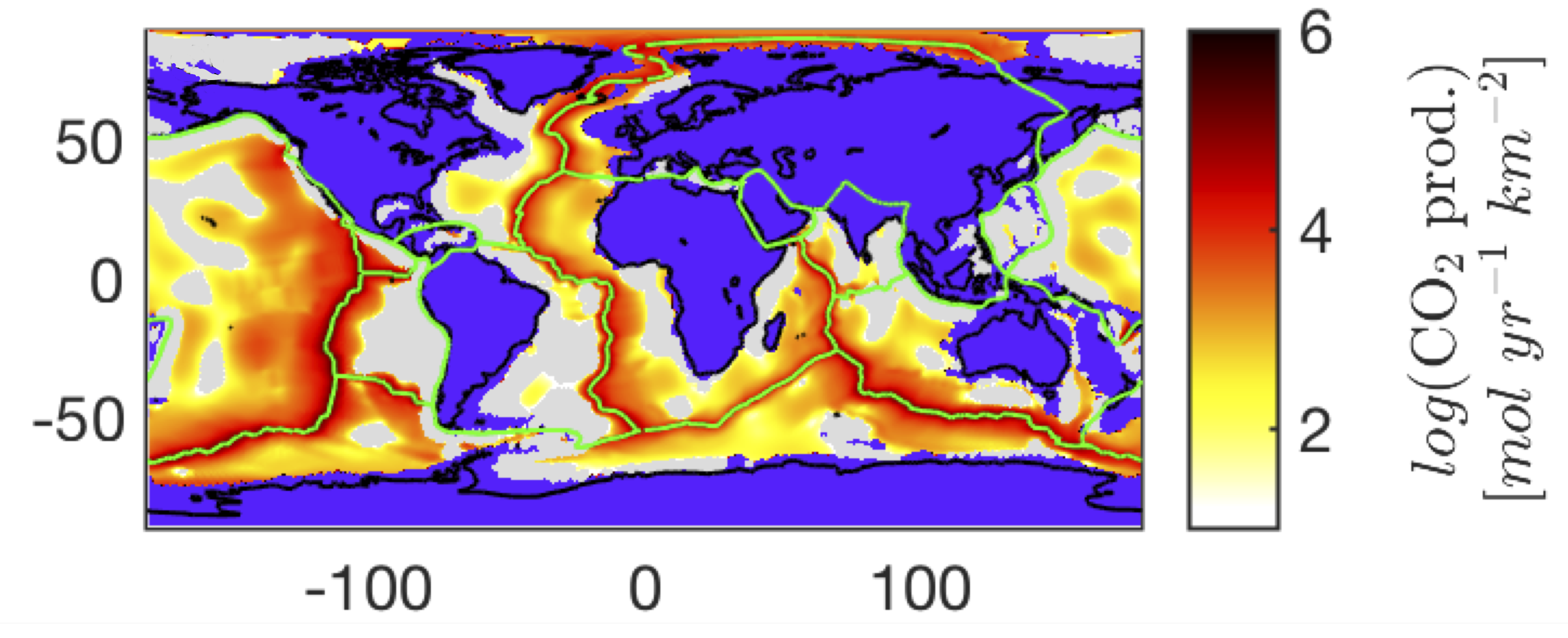
Stress drop estimates and hypocenter relocations of induced seismicity near Crooked Lake, Alberta. Human-induced earthquakes due to subsurface fluid injection pose a potential risk to surrounding populations. To understand how these induced earthquakes may differ from naturally occurring tectonic earthquakes, we characterize a sequence of earthquakes near Fox Creek, Alberta, likely induced by hydraulic fracturing. Publication
